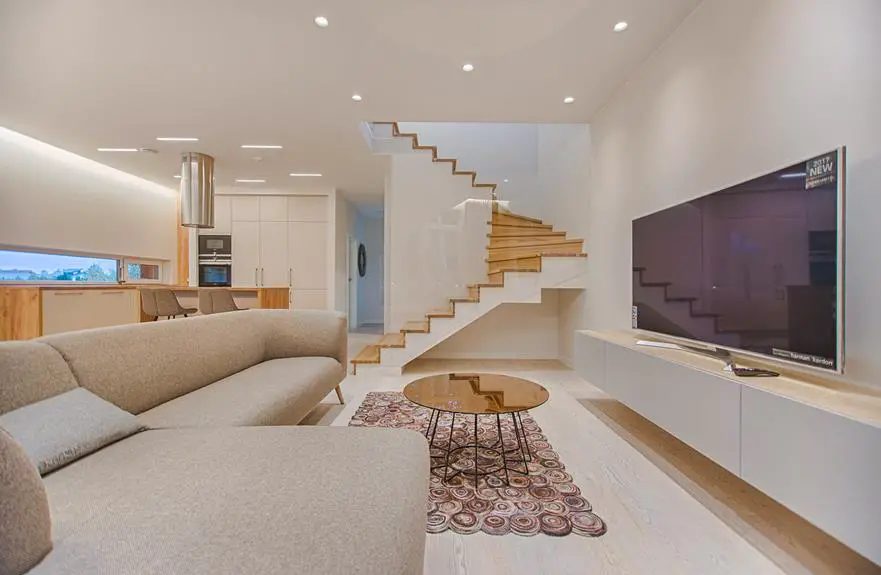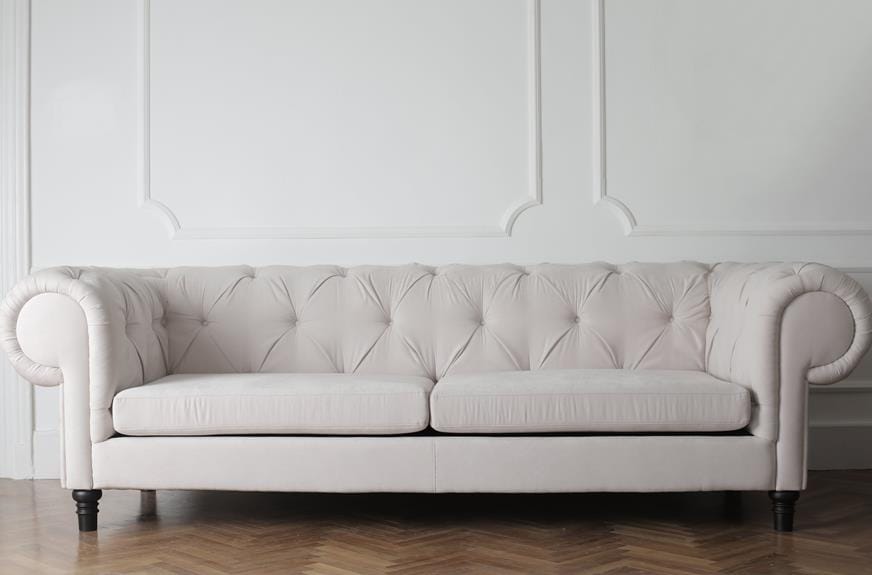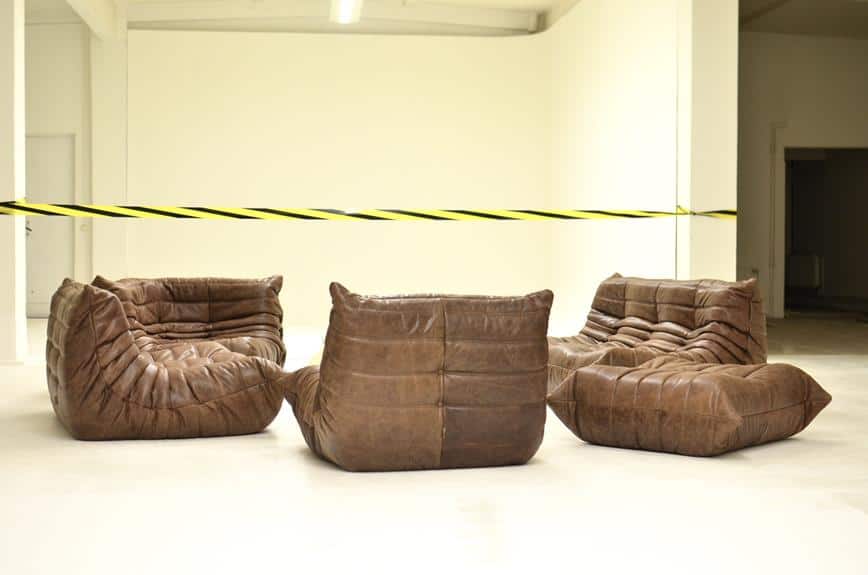Choosing the right spot for a TV in a living room is important for both the room's look and the quality of viewing. Consider the layout, furniture, and lighting when deciding on placement.
A common choice is above the fireplace, which can serve as a central point.
A media wall is another option that allows for a comprehensive entertainment setup. Placing the TV off-center might suit the room's flow better, and wall mounting can save space and improve viewability.
Tucking the TV into an alcove can prevent it from overpowering the room. Facing the TV towards the sofa is essential for comfort, and putting it in a corner can be efficient for space.
The best spot for the TV is one that balances functionality with the room's design.
Above the Fireplace Considerations
Placing a television above a fireplace requires checking the wall's strength, the TV's heat resistance, and organized cable management. This position saves room and centers the TV in the living area. However, it presents challenges that must be addressed.
The TV should be at a height that allows for a comfortable view when seated to avoid neck strain. The distance from the TV should be enough to prevent eye strain while ensuring an engaging viewing experience.
Screen glare from windows or lights can affect the picture quality. Positioning the TV to reduce glare or using window treatments can help.
In busy areas, the TV should not block movement or disrupt furniture placement. It should enhance, not overpower, the room's design. Hiding cables in the wall or using cord covers can keep the area looking tidy.
Installing a TV above the fireplace requires balancing functionality and style. Careful planning can make the TV a positive addition to the living space.
The Media Wall Concept
The Media Wall concept elevates the television to a prominent feature in small living areas by mounting it at eye level for improved viewing. This approach not only looks good but also increases the room's functionality. It integrates the wall-mounted TV with other media devices and decorative elements to form a unified display.
In a gallery wall setup, the TV is placed among artworks with matching black frames, making the screen blend in and look like another piece of art. This presents a visually cohesive look.
For a classic style, a TV can be combined with built-in shelves. This allows for the display of books, ornaments, and family photos around the TV, adding character and providing storage space for media equipment to keep the area tidy.
Placing the TV off-center can be practical, especially with a swivel mount, which allows for adjustable viewing angles to suit different seating positions without disrupting the room's design.
Off-Centre Placement Strategies
Off-centre TV placement can improve a room's aesthetic and functionality by creating a more balanced space for entertainment and socializing. This strategy places the TV next to other focal points, such as fireplaces or artwork, to encourage a layout that favors social interaction without sacrificing entertainment.
For a comfortable viewing experience, the TV should be at eye level. A swivel TV mount is useful for adjusting the TV's angle to face viewers, which is helpful when the TV is not in the center of the room. This allows for comfortable viewing from different spots in the room without letting the TV dominate the space.
This placement method can also reduce glare from sunlight on the TV screen by avoiding direct light from windows and doors. An off-centre TV stand can be chosen to match the room's decor, helping to integrate the TV into the design of the space.
Wall Mounting Techniques
Wall mounting a TV involves several steps that can be grouped into logical paragraphs for better readability:
- Bracket Selection:
- Choose between fixed, tilting, and full-motion brackets based on desired viewing flexibility.
- Fixed mounts are suitable for unchanging viewing positions.
- Tilting and full-motion mounts allow for angle adjustments to avoid neck strain.
- Assessing the Wall Structure:
- Determine the type of wall and its strength to select the appropriate mounting hardware.
- Ensure that the wall can support the weight of the TV and the mount.
- Managing Cables:
- Hide cords and wires by either hiding them in the wall or using a cord cover for a neat appearance.
- This helps to maintain a clean and organized look.
- Positioning the TV:
- Position the TV at a height where the screen's center aligns with eye level when seated.
- This height provides comfort and a better viewing experience.
- Enhancing the Aesthetic:
- Consider positioning the TV off-center or within a gallery wall for a less dominant presence.
- This adds functionality and style to the room.
- Adding a Low-profile Media Stand:
- Consider placing a low-profile media stand below the mounted TV.
- This can offer space for devices and storage without compromising the room's design.
The objective of wall mounting a TV is to securely mount the TV and ensure it fits well with the room's aesthetic and your lifestyle.
Utilizing Alcoves Effectively
Alcoves are often overlooked in living rooms but are ideal for placing TVs, combining practical use with design. It's important to ensure the TV size fits the alcove. Using an alcove for a TV saves floor space and helps organize the area. The TV should be mounted at eye level for comfortable viewing, with the screen's center aligning with the viewer's seated eye line.
Additionally, alcoves can enhance a room's decor. A TV, along with art and personal items, can make an alcove a stylish feature. Painting or wallpapering the alcove to match the room's theme can integrate the TV and lessen its visual impact when off.
Alcoves can also house other entertainment devices, keeping cables and equipment hidden. With careful planning, an alcove can be an efficient, attractive TV space that considers both functionality and aesthetics.
Couch-Facing Arrangements
Placing the TV across from the couch allows for a clear and comfortable view when watching media. This setup, with the TV as the focal point, is common in living rooms. When deciding on the TV's location, consider the room's layout and its main uses.
For those who watch TV frequently, positioning the TV opposite the sofa is effective. This ensures a straight view and reduces distractions and discomfort. To find the ideal distance and height for the TV, measure the screen diagonally and align the viewer's eye level with the lower third of the screen. This helps achieve comfort and good picture quality.
In terms of aesthetics and avoiding screen glare, consider the room's design. If the couch is central, a media wall could be useful for storage and decoration. If there's a fireplace, mounting the TV above it can save space and add warmth to the room.
For added versatility, a swivel TV mount can be used to adjust the TV's angle, providing a good view for everyone, which is ideal for rooms with multiple uses or for entertaining larger groups.
Corner Installation Tips
For a practical and aesthetic setup in a living room, installing a TV in a corner can save space. Ensure proper viewing angles and comfort by using a swivel mount for large TVs to adjust for different seating positions and reduce glare.
For small TVs in tight spaces, use a mount that allows the screen to extend and retract, maintaining functionality without overpowering the room's design. Position the TV away from direct sunlight to prevent screen glare.
Complement the TV area with the room's design by using matching paint, wallpaper, or shelves to create a niche for the TV. Add ambient lighting, like lamps, to improve the viewing experience and reduce eye strain.
The aim is to have a functional TV placement that fits the living room's atmosphere. A well-planned corner installation serves entertainment needs while maintaining the room's style.




